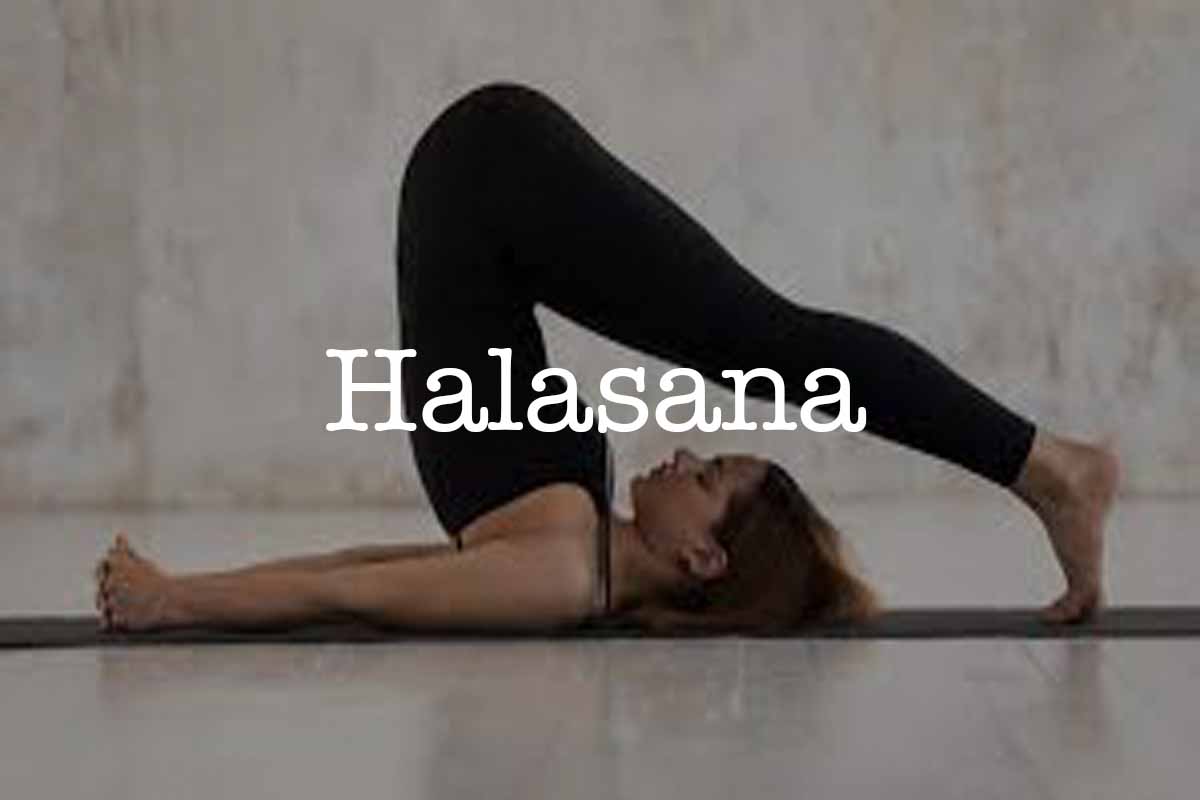Halasana is an intermediate level asana which focuses on stretching the lower back. This posture massages different organs of the digestive system, relieving the practitioners from abdomen related health problems such as constipation.
Etymology of Halasana
The term Halasana comprises two Sanskrit words: ‘Hala’ which means plow & ‘Asana’ which means posture. The posture has been known by this name as the position of the practitioner resembles a plow ploughing the ground.
Steps for performing Halasana
1. Lie on your back. the legs must be placed in a normal and stretched position with a little space between them and palms resting close to the waist. Keep your legs and hands straight.
2. Slowly raise the legs above your head so that the legs become perpendicular to the body and a right angle (90 Degrees) angle is maintained.
3. press both of your palms against the floor, so that you can get extra force to raise your waist above the floor and further raise the feet towards the sky. Slowly bend your legs forward while keeping them straight, so that the feet are placed on the ground above the head. rest your toes on the ground.
4. Shift your weight on your shoulders.
5. Once your body becomes balanced on your shoulders and toes, place your both hands close to your toes, above your head, interlock fingers and support your head. Ensure that both elbows are touching the floor.
6. Remain in this position for a few moments.
7. To return to the previous position, first unlock your fingers and place your hands close to your waist. then gently bring down your waist and then place your legs on the ground.
8. Lie down in this position for a few moments and practice this asana again. This asana can be practiced for 1-3 times per yoga session depending on the capacity of the practitioner.
Precautions for beginners/ practitioners
1. It might be difficult to touch the ground above your head with your toes for some beginners. In this case, they can take the support of their both hands to raise their waist and touch the ground with their toes.
2. People who are suffering from spondylosis, increased blood pressure and pain in the neck and/or shoulders must avoid this posture.
3. Women who are in earlier or later stages of pregnancy are strictly advice not to practice this asana.
Benefits of practicing Halasana
1. Helps in avoiding diseases such as constipation, diabetes, obesity, menstrual disorders and blood pressure.
2. Reduces excess fat from waist and stomach.
3. Helps in curing sexual disorder in men.
4. Improves the flexibility and elasticity of backbone.
5. Helps in increasing memorizing power.
